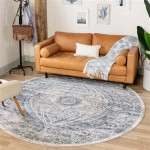Selecting Curtains To Complement a Gray Couch: A Comprehensive Guide
A gray couch serves as a versatile foundation in interior design, offering a neutral backdrop that can harmonize with a wide array of color palettes and design styles. The selection of appropriate curtains is crucial to enhancing the overall aesthetic and creating a cohesive and inviting living space. This article explores key considerations for choosing curtains that effectively complement a gray couch, focusing on color, material, pattern, and functionality.
Understanding Gray's Neutrality and Undertones
Gray, by its nature, acts as a neutral color, meaning it readily adapts to different environments. However, it’s important to recognize that gray is not a monolithic color. It exists in a spectrum of shades, each possessing subtle undertones that can significantly impact how it interacts with other colors. Some grays may lean towards warmer tones like beige or brown, creating a "greige" appearance. Others may exhibit cooler undertones of blue or green. Identifying the specific undertone of the gray couch is the first step in selecting complementary curtains.
A couch with warm gray undertones, for example, pairs well with curtains in earth tones, such as warm beige, rust, or even a muted gold. These colors enhance the warmth present in the gray, creating a comfortable and inviting atmosphere. Conversely, a couch with cool gray undertones benefits from curtains in cooler shades like blue, green, or lavender. These colors reinforce the coolness of the gray, producing a sophisticated and calming effect. Introducing warm-toned curtains to a cool-toned gray couch or vice-versa might result in a clash, making the room appear disjointed.
To accurately determine the undertone, compare the gray couch against a pure white surface under natural light. This comparison will highlight any subtle color biases within the gray. Once the undertone is identified, one can then proceed with selecting curtains that either complement or intentionally contrast the existing shade.
Color Palette Considerations for Curtain Selection
The choice of curtain color hinges on the desired ambiance and the existing color scheme of the room. There are several approaches to selecting a color palette that effectively complements a gray couch:
*Monochromatic:
This approach involves selecting curtains within the same color family as the gray couch, but in varying shades and tones. For example, a light gray couch could be paired with darker gray or charcoal curtains. This creates a sophisticated and streamlined look, emphasizing texture and subtle nuances in color rather than stark contrasts. Monochromatic schemes often lend themselves to a sense of calm and serenity. *Complementary:
This strategy involves choosing colors that sit opposite gray on the color wheel. Depending on the specific shade of gray, potential complementary colors include shades of yellow, orange, or even pink. The goal here is to create visual interest through contrast. For instance, a light gray couch paired with mustard yellow curtains can inject energy and vibrancy into a room. It's important to use complementary colors judiciously, as too much contrast can overwhelm the space. *Analogous:
This approach focuses on selecting colors that are adjacent to gray on the color wheel. Depending on the gray's undertone, analogous colors could be blues, greens, or purples for a cool gray, or browns, beiges, or oranges for a warm gray. This creates a harmonious and balanced color scheme, offering more visual interest than a monochromatic scheme while maintaining a cohesive aesthetic. *Neutral:
A neutral color palette utilizes shades of white, beige, cream, and brown alongside gray. This option delivers a minimalist and timeless aesthetic. White or off-white curtains can create a bright and airy atmosphere, while beige or cream curtains provide warmth and softness. The key to success with a neutral palette lies in incorporating texture and pattern to prevent the space from feeling bland.Beyond these primary approaches, consider the impact of color psychology. Light colors tend to make a room feel larger and more open, while darker colors create a sense of intimacy and enclosure. Cool colors promote relaxation, while warm colors energize the space.
Material, Texture, and Pattern in Curtain Selection
Beyond color, the material, texture, and pattern of the curtains play a significant role in shaping the overall aesthetic and functionality of the room. Different materials offer varying levels of light control, privacy, and insulation.
*Material:
Linen curtains provide a light and airy feel, allowing natural light to filter through while offering a degree of privacy. They are well-suited for casual living spaces. Cotton curtains are versatile and easy to maintain, making them a practical choice for everyday use. Velvet curtains offer a luxurious and opulent look, providing excellent light blockage and insulation. Silk curtains exude elegance and sophistication, but are more delicate and require professional cleaning. *Texture:
Textured curtains can add depth and visual interest to a room, especially when using a neutral color palette. Options include woven fabrics, embroidered details, or even subtle pleating. Textural variations can elevate the overall design, preventing the space from feeling flat or monotonous. *Pattern:
Patterned curtains can introduce personality and character to a room. Geometric patterns offer a modern and contemporary feel, while floral patterns evoke a sense of romance and nature. Stripes can create a sense of height or width, depending on their orientation. When selecting patterned curtains, it’s important to consider the scale of the pattern and its relationship to the size of the room and the other elements within the space. A large, bold pattern may overwhelm a small room, while a small, delicate pattern may get lost in a larger space.Consider the amount of natural light the room receives when selecting the material and texture of the curtains. For rooms with abundant natural light, lighter materials like linen or sheer fabrics may be ideal. For rooms that require more light control, heavier materials like velvet or blackout fabrics are more suitable. Layering curtains, such as combining sheer curtains with heavier drapes, offers flexibility in controlling light and privacy.
The choice of curtain material also impacts its maintenance requirements. Linen and cotton curtains are typically machine washable, while velvet and silk curtains often require professional cleaning. Consider lifestyle and practical considerations when selecting curtain materials.
Practical Considerations: Functionality and Hardware
While aesthetics are important, the functionality of the curtains and the associated hardware should not be overlooked. The choice of curtain rod, rings, and other hardware can significantly impact the overall look and performance of the curtains.
*Light Control:
Determine the level of light control required for the room. Blackout curtains are ideal for bedrooms or home theaters where maximum darkness is desired. Room-darkening curtains provide a moderate level of light blockage, while sheer curtains allow natural light to filter through. *Privacy:
Consider the level of privacy needed. Sheer curtains offer minimal privacy, while heavier fabrics provide more seclusion. Layering curtains, such as combining sheer curtains with heavier drapes, allows for flexible privacy control. *Insulation:
Curtains can provide insulation, helping to regulate the temperature of the room and reduce energy costs. Heavier fabrics, such as velvet or lined curtains, offer better insulation than lighter fabrics. *Curtain Hardware:
The choice of curtain rod and rings should complement the overall style of the room. Metal rods offer a contemporary look, while wooden rods provide a more traditional feel. The size and placement of the rod should also be considered. A rod that extends beyond the window frame can make the window appear larger and allow more light to enter the room when the curtains are open.Consider the length of the curtains. Curtains that reach the floor create a more formal and elegant look, while curtains that puddle slightly on the floor add a touch of romance. Shorter curtains, such as those that stop at the windowsill, are best suited for kitchens or bathrooms where practicality is paramount.
The choice of curtain heading style, such as grommets, pleats, or rod pockets, also influences the overall appearance and functionality of the curtains. Grommet curtains offer a clean and modern look, while pleated curtains provide a more traditional and tailored appearance. Rod pocket curtains are easy to install and offer a more casual feel.
By carefully considering these factors, one can select curtains that not only complement a gray couch but also enhance the overall aesthetic and functionality of the living space, creating a harmonious and inviting environment.

41 Stylish Grey And Yellow Living Room Décor Ideas Digsdigs

What Color Curtains Go With A Gray Couch

Tips On Matching Drapes To Your Furniture Dmi

What Color Curtains Go With A Gray Couch 12 Ideas

Which Curtains Go With A Grey Sofa Find Out Now

What Color Curtains Go With A Gray Couch 12 Ideas

Mint Curtains With Gray Furniture

Charcoal Gray Living Room Curtains Design Ideas

3 Cushion Curtain Colours To Pair With Grey Sofa Minotti London

Charcoal Gray Living Room Curtains Design Ideas








